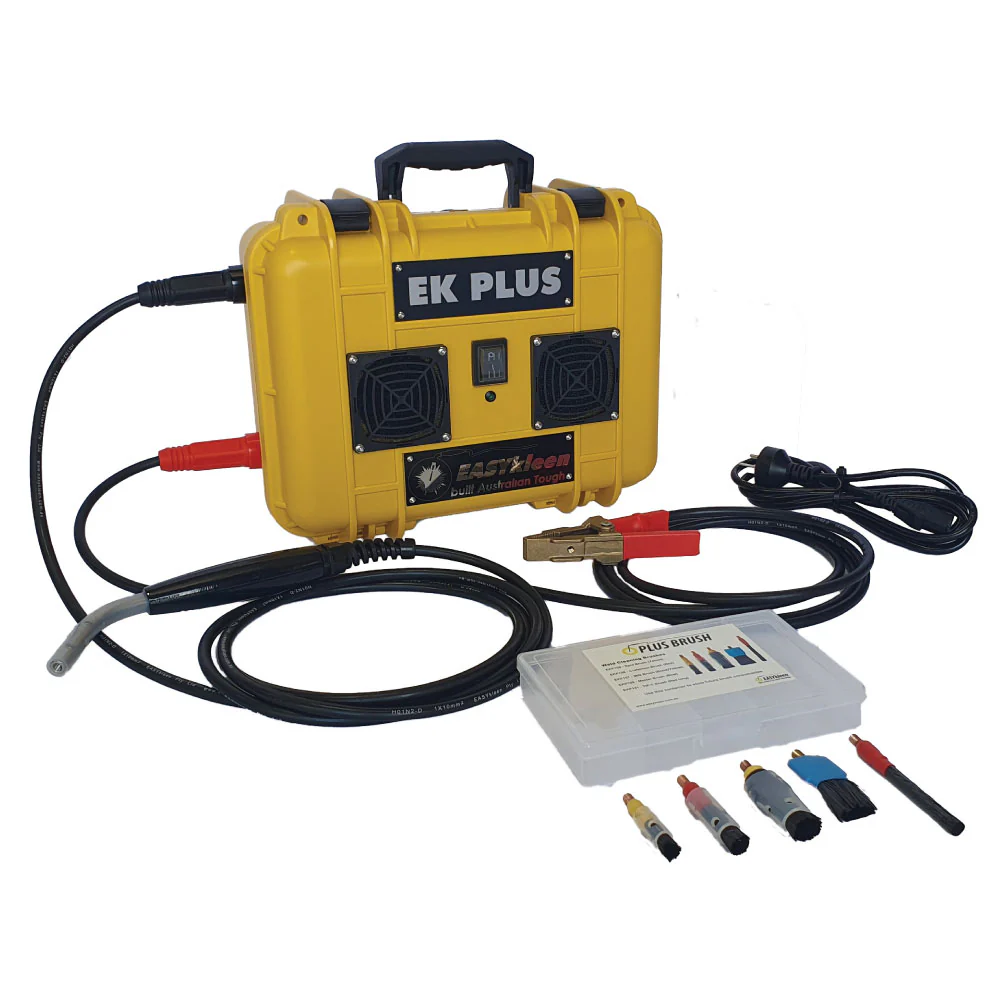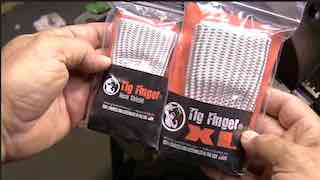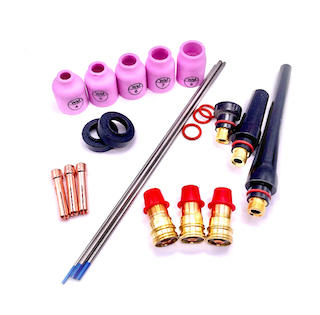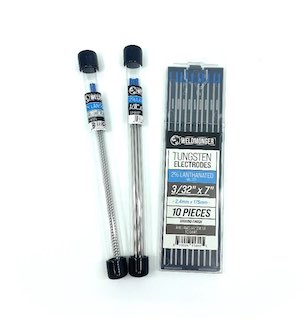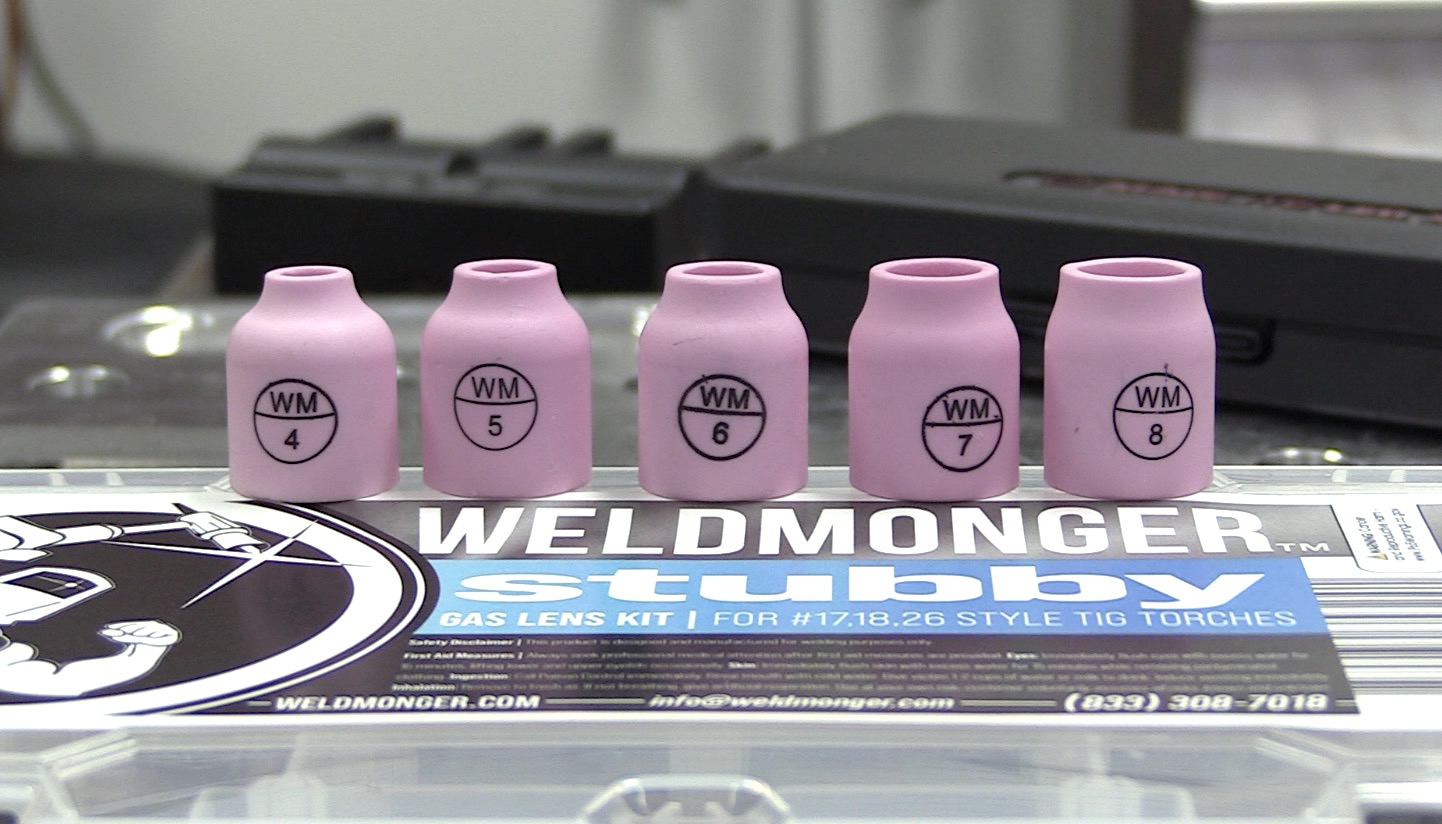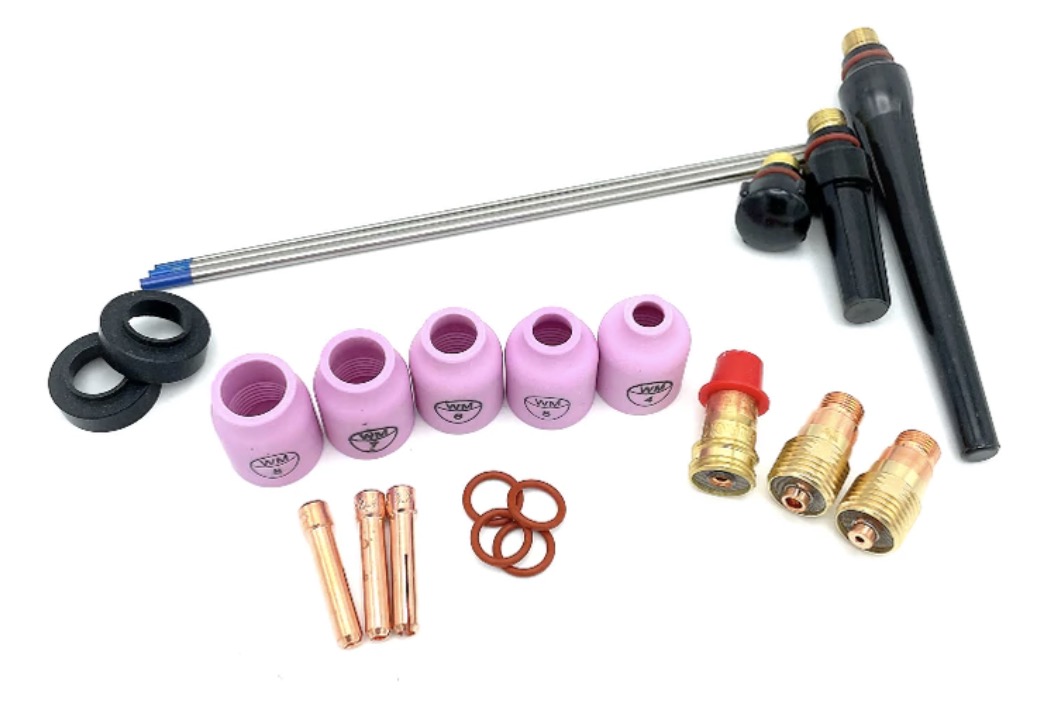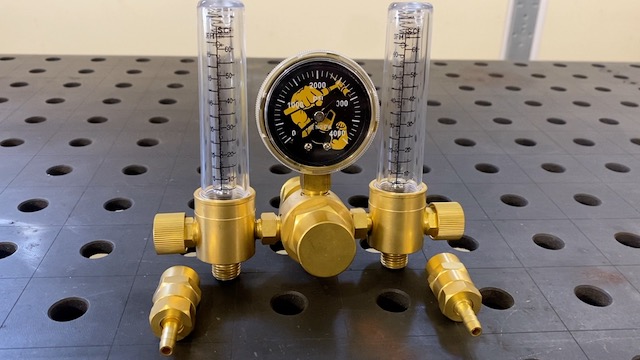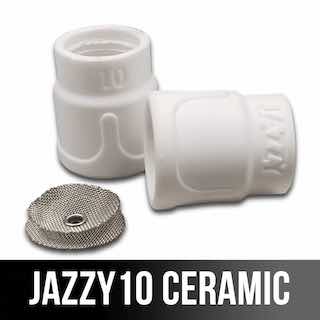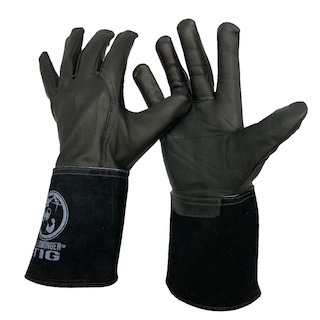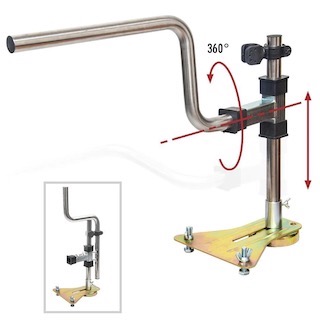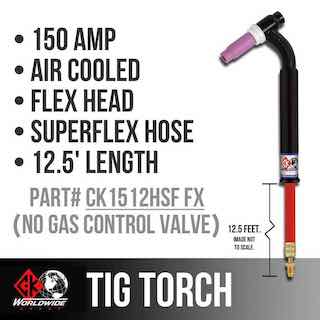Simple Metallurgy
Please take advantage of our Free Guidebooks below
Simple Welding Metallurgy for Carbon and low alloy steels like 4130
Understanding What Really Matters in the Weld Zone
For most welders, metallurgy might seem like a subject best left to engineers in lab coats. But if you weld carbon steels, you're already dealing with metallurgy—whether you realize it or not.
The key takeaway?
The main concern is making a sound weld that doesn't weaken the part or lead to failure in service. This article breaks down just the essentials every welder should understand to avoid problems like cracking, brittleness, or loss of toughness.
🔧 What Is the Main Concern When Welding Carbon Steels?
The main concern is preserving the strength, ductility, and toughness of the steel in and around the weld. Poor heat control or the wrong process can cause:
- Cracking (especially cold cracking)
- Loss of toughness in the heat-affected zone (HAZ)
- Excessive hardness, which can lead to brittle failure
- Distortion and residual stress
Even if a weld looks good on the outside, it may fail under stress if the metallurgy isn’t considered. That’s why good weld procedures matter.
Why Are Low Hydrogen Processes Specified in Welding Procedures?
Hydrogen is the enemy when welding medium to high carbon steels. If hydrogen gets trapped in the weld or HAZ, it can lead to hydrogen-induced cracking, also called cold cracking. This type of cracking may show up hours or even days after welding.
Low hydrogen processes (like SMAW with E7018 or GMAW with proper shielding gas, or GTAW) are used because:
- They limit moisture and hydrogen from entering the weld.
- They help prevent delayed cracking in hardened zones.
- They’re critical for structural or pressure vessel work where failure is not an option.
➡️ Note: Stick Electrodes like E7018 should be kept in a rod oven at 250°F or more to stay dry.
🔥 When and Why Is Preheating Needed?
Preheating is a simple tool with big benefits. It’s used when welding:
- Thick sections of carbon steel
- High carbon or alloy steels
- Steels with poor weldability (high CE or carbon equivalent)
What does preheating do?
- Slows the cooling rate to avoid rapid hardening
- Reduces the risk of hydrogen cracking
- Helps drive off moisture from the base metal
- Promotes softer microstructures in the HAZ
➡️ Example: A36 mild steel might not need preheat, but a piece of 2" thick 1045 could require 300°F or more.
What is Grain Growth?—and Why Avoid It?
Every time steel is heated to welding temperatures—especially in the HAZ—it changes at the microscopic level.
If the temperature gets too high or stays hot too long, the grains in the steel grow too large. This is called grain growth, and it leads to:
- Reduced toughness and impact strength
- More brittle failure modes
- Poor performance in dynamic or cold environments
You want fine, uniform grains for strength and ductility.
How to avoid excessive grain growth:
- Control your heat input
- Use proper preheat and interpass temperatures
- Avoid excessive amperage or long arc times
- Follow WPS (Welding Procedure Specifications) for base material
- stringers for multiple pass welds
- avoid arc strikes outside the weld
You don’t need a metallurgy degree to weld carbon steel successfully—but you do need to understand the basics of how heat affects steel. In short:
- Keep hydrogen low
- Control your heat
- Preheat when needed
- Avoid overheating the HAZ
Simple Metallurgy of 300 series Stainless
The 300 series of stainless steels—like 304, 316, and 321—are among the most commonly used stainless materials in fabrication, food service, medical, and chemical applications. But while they’re known for their corrosion resistance and weldability, poor welding practices can ruin those benefits fast.
This article breaks down the essential metallurgy behind 300 series stainless and how to maintain its key properties before, during, and after welding.
What Makes 300 Series Stainless Special?
300 series stainless steels are austenitic. That means:
- They are non-magnetic ( unless cold worked)
- They have excellent corrosion resistance
- They do not harden with heat treatment
- They stay ductile even at low temperatures
These alloys get their corrosion resistance mainly from chromium and nickel—chromium forms a thin oxide layer that protects the metal, and nickel stabilizes the austenitic structure.
The Welding Risk: Losing Corrosion Resistance
When welding, the main concern isn’t strength—it’s maintaining the stainless properties, especially corrosion resistance. Improper welding can lead to:
- Carbide precipitation and Stress corrosion cracking (chromium gets tied up with carbon at grain boundaries)
- Sugaring or oxidation on the root side of the weld
- Contamination from carbon steel tooling or poor filler choices
If you destroy the chromium oxide layer—or deplete the chromium near the weld—you turn “stainless” into just another rust-prone metal.
Why 300 Series Doesn’t Harden from Fast Cooling
Unlike carbon steel, which can form hard and brittle microstructures like martensite when cooled quickly, 300 series stainless is stable austenite. This means:
- Rapid cooling won’t harden it
- You don’t have to worry about quench cracking
- You can weld and air-cool without losing ductility
This also means that preheating isn’t necessary—even on thick sections.
🔥 Why Preheat Is Not Needed for Thick Stainless
Preheating is typically used on carbon steels to:
- Slow cooling and avoid cracking
- Reduce residual stress
- Prevent hydrogen-induced issues
But with 300 series stainless:
- There’s very little hydrogen cracking risk
- Hardening from quick cooling is not a concern
- The alloy remains ductile even when welded cold
So unless you're welding in extremely cold environments (or onto a massive heat sink), preheat is unnecessary—and in fact, too much heat input can cause grain growth or warping.
✨ Electropolishing After Welding: The Secret Weapon
Welding—even with good shielding—can burn off the protective chromium oxide layer and leave behind heat tint, discoloration, and roughness. This makes the weld area:
- More prone to corrosion
- Rougher and harder to clean
- A potential failure point in sanitary or chemical applications
Electropolishing is a process that removes a thin layer from the surface using an electrochemical bath. It does three key things:
- Smooths the surface microscopically, reducing crevices for corrosion or bacteria
- Restores the passive chromium oxide layer, improving corrosion resistance
- Improves appearance, making welds blend seamlessly
➡️ Bonus: Electropolishing reaches areas that brushing or pickling might miss—ideal for sanitary tubing or medical components.
Welding 300 series stainless steel isn’t that hard—but preserving its properties takes discipline. To sum it up:
- Use low heat input and tight arc control
- Avoid contamination from carbon steel or dirty filler
- Skip the preheat—even on thick material
- Follow up with electropolishing or proper post-weld cleaning to restore corrosion resistance
Do it right, and your stainless weld will stay stainless.
Simple Metallurgy of Aluminum Alloys
Hot shortness video
Simple Metallurgy as It Applies to Welding Aluminum, written in clear, practical language for welders, fabricators, and students:
Aluminum is lightweight, corrosion-resistant, and widely used in everything from aircraft parts, to ladders to automotive parts. But it doesn’t behave like steel when you weld it—and if you don’t understand a few basic metallurgy principles, you can end up with cracks, porosity, or soft/weak zones that ruin the properties
.
This article covers the key points of aluminum metallurgy that every TIG or MIG welder should know: from surface prep and filler selection to how welding affects the metal’s properties.
🧼 Best Surface Prep for Welding Aluminum
They say the 3 C’s of Tig welding aluminum are:
- CLEAN
- CLEAN
- CLEAN
ALL ALUMINUM naturally forms an oxide layer (aluminum oxide) that melts at over 3,700°F—while the base metal melts around 1,200°F.
That is why aluminum is typically welded using Alternating current (AC).
The reverse (electrode positive) portion of the AC cycle provides a cleaning action that is beneficial in breaking up the aluminum oxide layer that is on the surface all aluminum:
But that doesn’t mean that all aluminum needs stringent cleaning before TIG welding.
What? That probably goes against what all text books recommend but it is just reality.
I am NOT saying that ALL aluminum can be welded with ZERO cleaning.
But Not all aluminum requires wire brushing or abrasive cleaning before welding. In fact, you would get fired at a lot of manufacturing facilities if you put wire brush marks on aluminum parts.
There is a big difference between brand new aluminum tubing, and an aluminum handrail exposed to salt air for years.
Brand new aluminum can usually be tig welded with only a simple wiped down to remove shop dust.
Why the heavily oxidized aluminum handrail that has been exposed to salt air, will need more stringent cleaning using wire brushes, wire wheels, or abrasives to remove the heavy layer of oxide.
If a heavy oxide layer isn’t removed, you’ll get a dirty weld, along with poor fusion.
Surface prep checklist:
- Degrease with acetone or a dedicated aluminum cleaner (no oil-based solvents).
- Wire brush with a dedicated stainless steel brush (never use one that’s touched steel).
- Don’t overbrush with high RPM wire wheel—you can smear oxide into the surface.
- If needed, use debur tool to scrape or use file on edges to expose clean metal right before welding…especially on plasma cut edges.
Also, weld as soon as possible after cleaning to prevent fresh oxide or moisture from forming.
🚫 Which Aluminum Alloys Should NOT Be Welded?
Not all aluminums are weldable—even if they look the same. Some crack easily, especially certain high-strength grades.
2024 and 7075 are the 2 main aluminum alloys not recommended for welding.
Both are heat treated for high strength and lose much of that strength if welded using arc welding processes like tig or mig.
But how do you tell if a part is made from 2024 or 7075?
The first clue is to look for prior welds on the part.
If there are mechanical fasteners like rivets or screws in areas where it would have been easier to weld it, then it is likely the part is made from either 2024 or 7075.
There are also chemical tests to determine aluminum alloy types but they require training and experience to use.
🔧 Filler Metal Selection – Get It Right the First Time
Using the wrong filler can lead to:
- Cracking
- Loss of strength
- Corrosion
This chart for filler metal selection is a great resource ...pro tip: make sure to read footnotes
https://www.hobartbrothers.com/downloads/aluminum_selecti_1lOo.pdf
🔥 What is Hot Shortness? (see the first video on this page)
Hot shortness is when aluminum cracks while it's still partially liquid during cooling. It happens because:
- Some alloys form low-melting eutectic phases at grain boundaries.
- These melt too early or too late in the weld cycle and lead to liquation cracking.
This is why certain alloys (like 2024 or 7075) are not recommend for welding—they’re full of elements like copper or zinc that create low melting eutectics.
🛡️ Why Are Some Aluminum Parts Anodized After Welding?
Anodizing is an electrochemical process that:
- Builds up the oxide layer
- Improves corrosion resistance
- Enhances appearance (especially in architectural parts)
But welding destroys the anodized layer in the weld zone. That’s why:
- Anodizing is done after welding if possible
- Color mismatches can happen if welds aren’t properly cleaned or blended consult this filler metal selection part to make sure to choose a filler metal that will respond favorably to anodizing after welding https://www.hobartbrothers.com/downloads/aluminum_selecti_1lOo.pdf
Some parts are chemically brightened or clear anodized after welding to restore a uniform finish and corrosion protection.
🧊 What about Loss of Temper in the HAZ (Heat-Affected Zone)?
Many aluminum alloys are heat-treatable (like 6061-T6). Welding softens the area around the weld, known as the HAZ. This happens because:
- The precipitates that give the alloy its strength dissolve into the alloy matrix.
- The weld is often stronger than the surrounding softened area, causing failure in the HAZ.
How to manage temper loss:
- Design around it: don’t expect full T6 strength after welding.
- Use a proven procedure produces adequate strength in the haz.
- Post-weld aging or re-heat treating may be required (but not always practical).
Welding aluminum isn’t just about melting metal—it’s about understanding the material. Here's what matters most:
- Prep like a pro—oxides and grease will ruin the weld.
- Know your alloy—some aluminums are best left unwelded.
- Choose filler wisely—and use charts when in doubt.
- Watch out for hot shortness - inspect welds for cracking... especially on starts of fillet welds
- Expect some temper loss—and plan your design around it.
- Post-weld anodizing helps restore function and finish.




